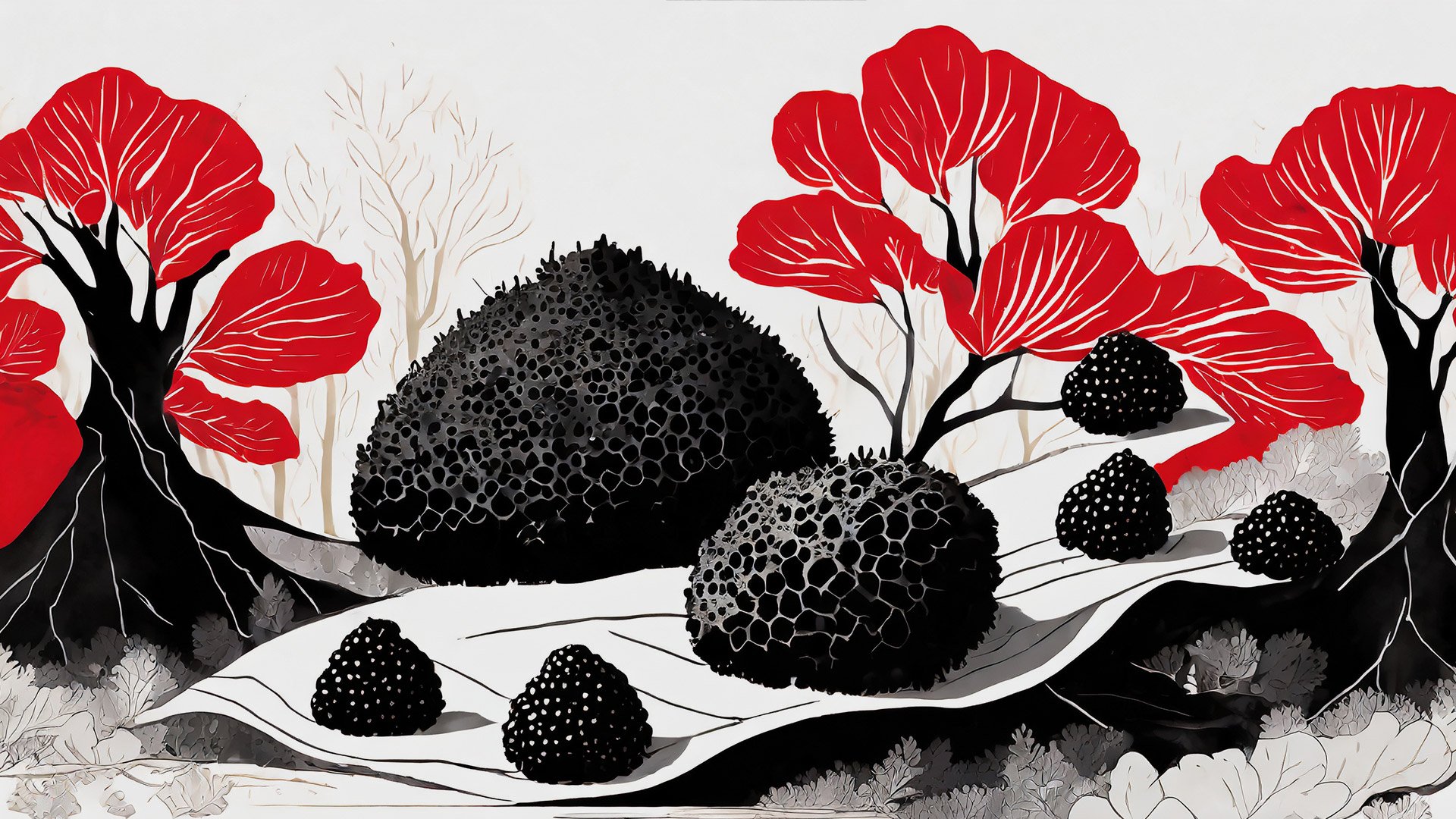Unveiling the Health Benefits of Truffles
BLACK TRUFFLES, A DELECTABLE FUNGUS RENOWNED FOR THEIR ROBUST FLAVOR, HAVE EMERGED AS A CULINARY TREASURE IN VARIOUS SAVORY DISHES. BEYOND THEIR GASTRONOMIC ALLURE, TRUFFLES POSSESS SIGNIFICANT NUTRITIONAL VALUE AND HAVE RECENTLY GAINED WIDESPREAD ACCLAIM AMONG CHEFS AND CONNOISSEURS. THIS ARTICLE ELUCIDATES SIX REMARKABLE HEALTH BENEFITS ASSOCIATED WITH TRUFFLES.
Rich in Essential Nutrients
Truffles boast a commendable nutrient profile, featuring substantial levels of vitamins, minerals, carbohydrates, protein, and fiber. Studies indicate their potential as a comprehensive protein source, encompassing all essential amino acids necessary for bodily functions. Variations in nutritional composition among species, such as the white desert truffles, reveal nuanced disparities in protein, fat, and fiber content.
Sources
Mushrooms and Truffles: Historical Biofactories for Complementary Medicine in Africa and in the Mi2
High in Antioxidants
A noteworthy attribute of truffles lies in their abundance of antioxidants, pivotal in combating free radicals and mitigating oxidative cell damage. Research underscores the presence of antioxidants like vitamin C, lycopene, gallic acid, and homogentisic acid, with test-tube studies hinting at potential benefits, including reduced cancer cell growth and inflammation. However, further investigation is essential to clarify the impact of fresh truffles on overall health.
Sources
Free Radicals, Antioxidants in Disease and HealthNutritional value, chemical composition and antioxidant activity of three Tuber species from China
Phenolic profile, antioxidant, anti-inflammatory and cytotoxic activities of black (Tuber aestivum Vittad.) and white (Tuber magnatum Pico) truffles
Antibacterial Properties
In addition to their nutritional merits, truffles may possess antimicrobial properties, potentially inhibiting the growth of specific bacterial strains. Test-tube studies reveal inhibitory effects on bacteria such as Staphylococcus aureus and antibiotic-resistant Pseudomonas aeruginosa. Nevertheless, comprehensive human studies are crucial to gauge the antibacterial impact of diverse truffle types.
Sources
A promising peptide antibiotic from Terfezia claveryi aqueous extract against Staphylococcus aureus in vitro
Evaluation of antibacterial activity of aqueous and methanolic extracts of the truffle Terfezia claveryi against Pseudomonas aeruginosa
Potential Anticancer Effects
Preliminary evidence, albeit confined to test-tube studies, suggests truffles may harbor potent anticancer properties. Compounds extracted from different truffle types exhibit inhibitory effects on tumor cell growth, presenting potential avenues for combatting liver, lung, colon, breast, cervical, and other cancers. Rigorous research is imperative to assess the impact of truffles on human cancer growth when consumed in a regular diet.
Sources
Isolation and characterization of polysaccharides with the antitumor activity from Tuber fruiting bodies and fermentation system
Phenolic profile, antioxidant, anti-inflammatory and cytotoxic activities of black (Tuber aestivum Vittad.) and white (Tuber magnatum Pico) truffles
Anti-Inflammatory Potential
Balancing the vital role of inflammation in immune function, truffles may aid in alleviating inflammation, promoting overall health and immunity. Test-tube studies indicate certain compounds in black and white truffles can impede specific enzymes involved in the inflammatory process, while also combating free radical formation. Human studies are essential to discern the influence of normal truffle consumption on inflammation levels.
Sources
The inflammation theory of disease
Antioxidant components and antioxidant/antiradical activities of desert truffle (Tirmania nivea) from various Middle Eastern origins
Antioxidant and antiradical properties of methanolic extracts from algerian wild edible desert truffles (terfezia and tirmania, ascomycetes)
Free radicals and antioxidants in inflammatory processes and ischemia-reperfusion injury
Incorporation into the Diet
Once considered a luxury reserved for gourmet dishes, black truffles are now accessible through specialty markets and online retailers. Their concentrated flavor allows for transformative culinary experiences with minimal quantities. Whether adorning salads, soups, or main courses, or infused into olive oil or butter, truffles bring a distinct aroma and flavor to a variety of dishes, from sauces and pasta to risottos and meat or seafood creations.
Truffles, with their unique taste and aroma, offer not only culinary pleasure but also potential health benefits. While existing research primarily relies on test-tube studies with concentrated truffle extracts, further investigation into the impact of these properties on human health is essential. Moderation and incorporation into a well-rounded diet are advised to maximize potential benefits.
Recipes
Truffle Butter
Ingredients
1 cup unsalted butter softened, 226 g
1 Tbsp truffle oil 15 mL
1 Tbsp finely chopped black truffle can substitute with an additional 1 Tbsp of truffle oil
½ tsp salt
Instructions
Mix: In a clean bowl, stir together all ingredients until evenly combined.
Shape: Spoon mixture onto a piece of parchment or wax paper, forming into a log shape. Wrap tightly in parchment, then twist the ends to secure.
Chill: Let chill in the fridge to harden back up for at least 2 hours before using.
Notes
Store in an airtight container in the fridge for 2 to 3 weeks.
Truffle Oil
Ingredients
½ cup good quality olive oil 120 mL
1 Tbsp shaved black truffle
Hover Method
Punch a small nail through the lid of a mason jar. Pierce a truffle (or piece of a truffle) onto the nail. Pour oil into the jar, then twist the lid with the nailed-on truffle onto the jar, ensuring the truffle doesn't touch the oil. Place somewhere cool and dry, letting truffle flavor infuse into oil for a week. Store for up to 6 months.
Hot Steep Method
Heat oil over low heat until it reaches about 130°F (54°C). Remove from heat and add shaved truffle. Cover and let cool completely. Strain and store in a clean, airtight jar for up to 3 months.
Cold Steep Method
Place oil in a clean glass jar, then add shaved truffle. Let steep for 1 week, then strain out truffle. Store for up to 1 month.





ANTIOXIDANT AND ANTICANCER
FRESH WINTER TRUFFLE (TUBER BRUMALE). HANDPICKED IN ECOLOGICALLY CLEAN REGIONS. CAREFULLY CLEANED OF DIRT AND FOREST DEBRIS.